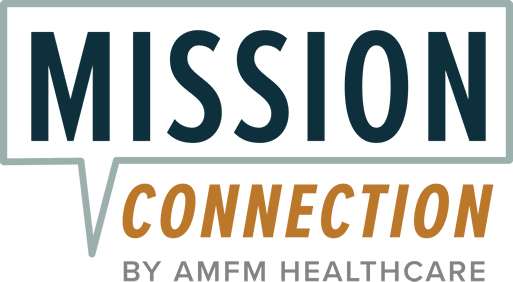Mental Breakdown Recovery Guide: Steps to Rebuild After Emotional Collapse

A nervous (or “mental”) breakdown isn’t a clinical term, but it’s used to describe a period when someone struggles with intense distress without the tools or adequate support to manage it. This distress makes it near-impossible to go about their day-to-day responsibilities as normal.
If you’ve ever experienced a mental breakdown, you’ll know it can be a scary time. Many people are unsure how to cope, and some may worry that things will continue to feel out of control. However, it’s important to know that finding your way back to emotional stability after a breakdown is very possible. With the right support and armed with knowledge and effective coping strategies, you can and will move forward into more positive times.
On this page, we’ll address ways you can recover from a nervous breakdown. From immediate steps to take to rebuilding your emotional strength, we will guide you through the process from start to finish.

What Is a Nervous Breakdown?
A nervous breakdown occurs when someone is unable to cope with mental health difficulties like anxiety or depression, or stress. You can’t go to the doctors and be diagnosed with a nervous breakdown, as it’s not recognized as a clinical term. Instead, it’s used to describe a state someone may enter if their mental health reaches crisis point.
As “nervous breakdown” isn’t a clinical diagnosis, it’s not always straightforward to identify if you’re experiencing a nervous breakdown or not. In these instances, understanding the common signs of nervous breakdown can help.
Recognizing the Signs of a Nervous Breakdown
As you read through the symptoms listed below, keep in mind that the most significant sign of needing intervention is a change in your ability to function with daily tasks. If you’re finding it difficult to do everyday tasks like taking care of yourself, going to work, or doing activities you enjoy, it’s important to reach out to a mental health professional.
Common Symptoms of a Nervous Breakdown The most common signs of a nervous breakdown are:2
Symptoms of depression or anxiety. These may include low self-esteem, irritability, excessive worrying, helplessness, difficulty breathing, withdrawal from loved ones, being easily angered, losing interest in previously-enjoyable tasks, and thoughts of self-harm or suicide.- Difficulty sleeping. Excessive amounts of stress can make it difficult to fall asleep and get a good night’s rest once you fall asleep. Some people experiencing a nervous breakdown may experience insomnia.
- Appetite changes. Stress triggers a release of cortisol, one of the body’s stress hormones. When you have continually high stress levels, it can disrupt your appetite. You may be more likely to overeat, potentially leading to weight gain, or you may have little to no appetite.
- Digestive difficulties. Cortisol also affects your digestive system. When cortisol triggers your fight, flight, or freeze stress response system, it reduces the function of body systems that aren’t immediately essential for survival. Digestion is one of these systems – as a result, you may experience problems with digestion, such as cramps, constipation, diarrhea, or bloating.3
- Intense tiredness. As a nervous breakdown can disrupt your sleep and leave you continually in stress mode, you’re likely to feel incredibly tired.
- Hallucinations. In severe cases, constant stress can result in hallucinations, meaning you hear or see things that aren’t there.
- Trouble concentrating. Research shows that stress can make it difficult to concentrate, particularly when it’s long-term. Prolonged stress can result in structural changes in the brain, which can make it harder to concentrate.
If you or a loved one is experiencing any of these issues, it may be time to consult your mental health provider.
Risk Factors That Contribute to Nervous Breakdowns:
Having one of these risk factors means you should take extra care to manage stress and practice positive coping skills. The risk factors that contribute to a nervous breakdown are:4
History of anxiety disorders (personal or family)- A disease or medical condition that limits your ability to function
- Having a psychiatric disorder
- Experiencing a highly stressful life event, such as the death of a loved one, divorce, home foreclosure, or financial difficulties
- Being in a distressing or abusive romantic relationship
- Burnout caused by workplace or school-related stress
- Chronic sleep issues
How to Recover From a Nervous Breakdown
Without the right support, mild mental health symptoms can worsen and become more severe, sometimes leading to a full-blown nervous breakdown. Left untreated, this can result in serious consequences like loss of employment, damage to personal relationships, and financial hardship.
The good news is that recovery is entirely possible. With both short- and long-term interventions, you can fully recover from a mental breakdown and rebuild a stronger foundation to face challenges in the future.
Stage 1. Creating Safety and Stability After a Breakdown
If you’re experiencing or have recently experienced a mental breakdown, safety is your very first priority – this can be established through crisis support. Crisis intervention strategies use a quick response time to reduce permanent damage in a nervous breakdown. These strategies include:
- Crisis support: This involves contacting a mental health crisis line, visiting an emergency department, or accessing crisis intervention services.
- Inpatient or residential treatment: In cases of severe distress, inpatient care offers 24/7 supervision in a safe and structured environment. These settings provide crisis stabilization, psychiatric evaluation, and medication management.
- Short-term medication: A psychiatrist or physician may prescribe medication to manage acute symptoms such as anxiety, insomnia, or overwhelming emotional distress. These are typically used as temporary forms of support while longer-term treatment plans are developed.
- Reducing exposure to triggers: Creating a safe and calm environment to help you recover often involves taking time off work, avoiding high-stress settings, and limiting contact with people who contribute to your distress. This may also mean arranging respite care or staying with a friend or family member you trust.
Once you have re-established safety and stability, you can begin to focus on emotional healing and long-term recovery, which is the next stage of the process.
Stage 2. Emotional Healing After Breakdown
1. Cognitive Behavioral Therapy (CBT)
Unlike more traditional forms of therapy, CBT focuses on the present moment (not the past), helping you to address present-day difficulties which are interfering with your life. You’ll learn a wide range of coping strategies to help you cope with stress and mental health difficulties.
2. Dialectical Behavior Therapy (DBT)
Dialectical Behavior Therapy (DBT) is a structured type of CBT that was developed in the 1980s to treat people with intense emotional dysregulation, ongoing suicidal thoughts, or self-harm behaviors. It’s now widely used to treat conditions like borderline personality disorder, PTSD, depression, and eating disorders – especially when emotional dysregulation is at the core of the issue.
The two pillars of DBT are:
- Acceptance: Learning to sit with your emotions without judgment or self-criticism.
- Change: Developing skills to manage distress, regulate your emotions, and improve your relationships.
DBT typically combines individual therapy, group skills training, and phone coaching to help you learn and apply four key skills: Mindfulness, distress tolerance, emotional regulation, and interpersonal skills (like setting boundaries and communicating your needs).
3. Trauma-Informed Therapy
For some people, a mental breakdown is rooted in (or triggered by) unresolved trauma. Trauma-informed therapy recognizes the impact of trauma on our sense of safety, as well as our ability to connect with others and successfully live our lives.
Trauma-informed therapy, despite its name, isn’t a specific form of therapy. Instead, therapists use their understanding of trauma to deliver therapy in a specific way, being sensitive to your past experiences, triggers, and boundaries.
Some of the main forms of trauma-informed therapy for nervous breakdowns include:
- Trauma-Focused CBT (TR-CBT)
- Eye Movement Desensitization and Reprocessing (EMDR)
- Internal Family Systems (IFS)
These approaches can help you process your traumatic memories, rebuild a sense of self, and learn tools to manage your life after trauma.
4. Community-Based Support
There are also community-based supports that increase recovery rates and decrease relapses through building a supportive network. Joining support groups or finding a mentor helps alleviate judgment and reminds people that they are not alone. It helps a lot to know that other people go through similar struggles that you do.
At Mission Connection, we offer a range of community-based support services. Reach out to find out more about our different community-based options.
Stage 3. Rebuilding Mental Health: Small, Sustainable Steps
Some ways to support your mental health in the long term are:7
Regular exercise- Getting good sleep
- Eating healthy food
- Surrounding yourself with supportive people
- Nurturing your relationships
- Reducing time spent on your phone.
Returning to Work After a Breakdown
Careful planning is required before returning to work after a mental health crisis. It is best to consult with your therapist or doctor to create a return-to-work plan. The plan can include accommodations such as:
- Reduced hours and workload
- Phased return-to-work schedules
- Regular check-ins to encourage open communication with your supervisor or employer.
Additionally, discuss with your employer the services available through your job, such as Employee Assistance Programs (EAP) and other health benefits, including free gym memberships.
Post-Breakdown Recovery Timeline: What to Expect
Recovery is often not a linear process with steady steps of progress. Just like recovering from a physical injury, it can often be two steps forward and one step back. When you’re recovering or supporting a loved one through recovery, it’s essential to recognize recovery as a process and to be patient with your progress.
As everyone is unique, each person’s steps to rebuild their mental health can vary significantly, and treatment plans are not a one-size-fits-all process. You may find yourself moving backward or relapsing, only to jump ahead. Your recovery is your journey, and it’s important not to compare it with anyone else’s.
Get Therapeutic Support at Mission Connection
The experience of a mental breakdown can be scary, filled with uncomfortable emotions and moments that feel outside of your control. If you’re worried you may be facing one – or feel you’re at risk – know that you’re not alone.
At Mission Connection, we provide compassionate, professional care tailored to your unique needs. Our therapeutic services are designed to guide you through this difficult time, offering tools and strategies to help you regain stability and move forward in confidence.
Our team works collaboratively with you to create a personalized treatment plan that will support your recovery in all areas of life – from improving your well-being to rebuilding your relationships and returning to work when you’re ready. We also offer convenient telehealth services, so care fits around your life – not the other way around.
You don’t need to manage this alone. Reach out today or complete our confidential contact form to explore your options and take the first step toward healing.

References
- National Institute of Mental Health (n.d.). Mental illness. https://www.nimh.nih.gov/health/statistics/mental-illness
- WebMD Editorial Contributor. (2024, September 21). Signs of a Nervous Breakdown. WebMD. https://www.webmd.com/mental-health/signs-nervous-breakdown
- Harvard Health Publishing. (2024, April 3). Understanding the stress response. https://www.health.harvard.edu/staying-healthy/understanding-the-stress-response
- Cleveland Clinic. (2025, June 2). Nervous breakdown. https://my.clevelandclinic.org/health/diseases/22780-nervous-breakdown
- Burgess-Barr, S., Teale, A., & Jacobsen, P. (2024). A study investigating the implementation of NICE recommended psychological interventions for people with psychosis following a psychiatric inpatient admission. Journal of mental health (Abingdon, England), 33(4), 507–513. https://doi.org/10.1080/09638237.2024.2390387
- American Psychological Association. (2017). What is Cognitive Behavioral Therapy? https://www.apa.org/ptsd-guideline/patients-and-families/cognitive-behavioral
- Hesler, B. (2023, February 21). 5 tips to manage stress. Mayo Clinic Health System. https://www.mayoclinichealthsystem.org/hometown-health/speaking-of-health/5-tips-to-manage-stress






